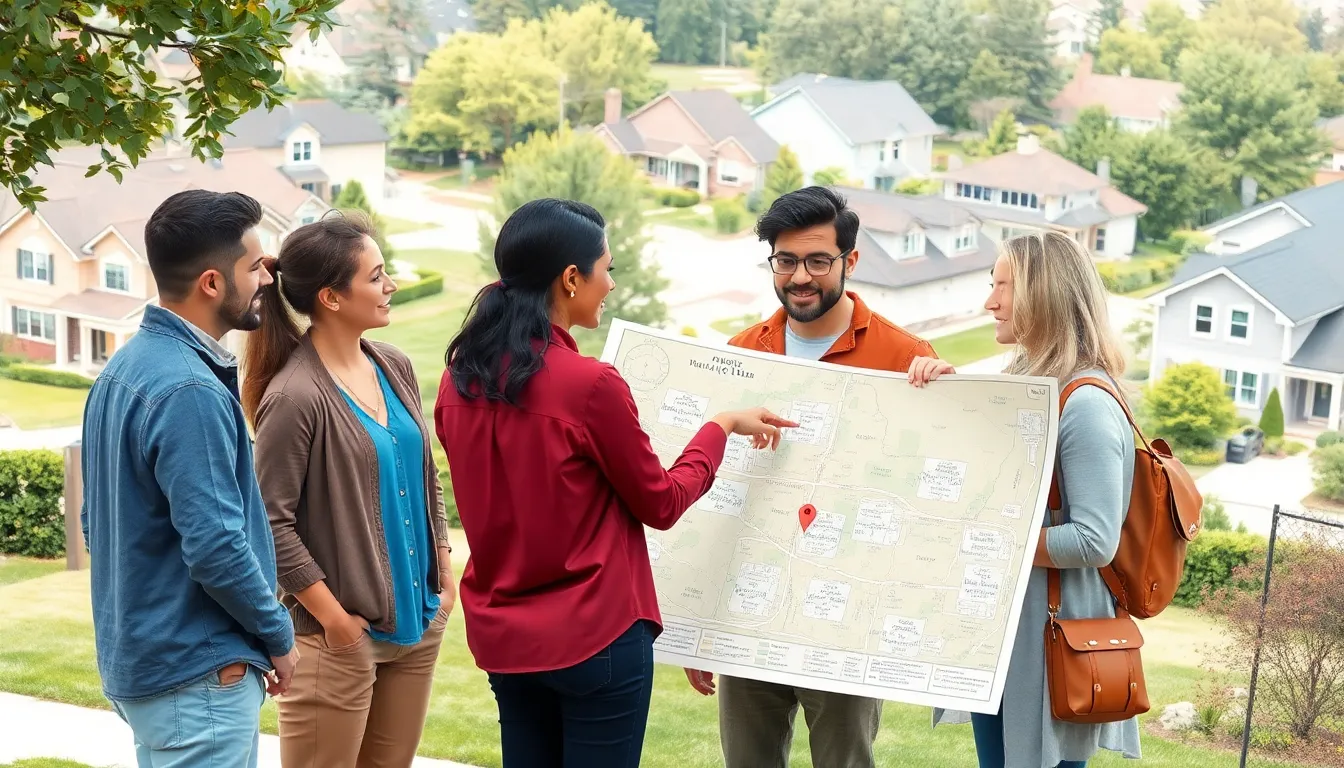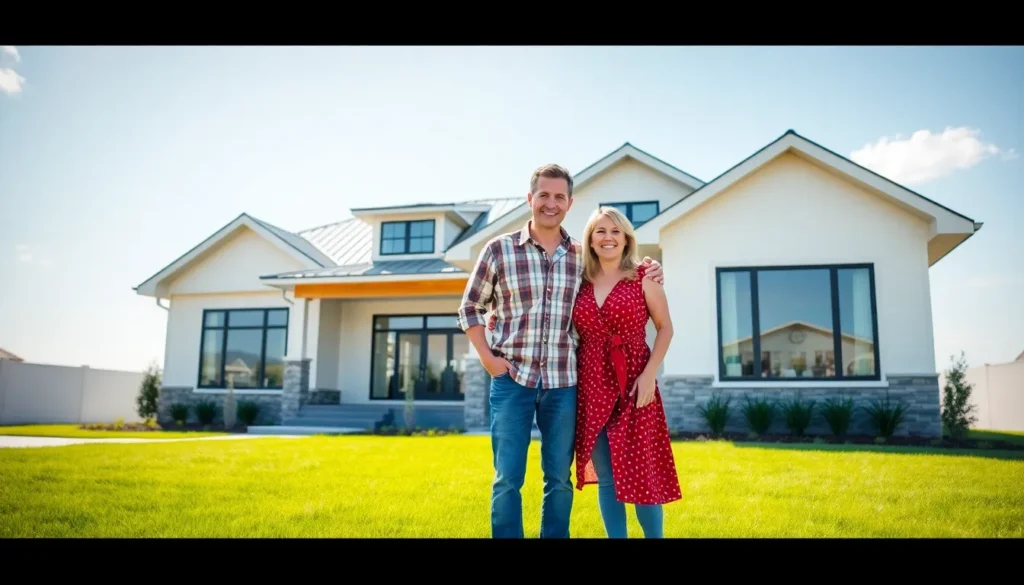Table of Contents
ToggleBuilding a new home can feel like embarking on an epic quest, complete with dragons in the form of budget constraints and the occasional troll known as indecision. Yet, amidst the chaos, there’s something exhilarating about creating a space that’s uniquely yours. It’s not just about bricks and mortar; it’s about crafting a sanctuary where memories will unfold and laughter will echo.
Imagine sipping coffee in a sunlit kitchen or hosting friends in a cozy living room that reflects your style. With the right guidance, navigating the world of home construction can be as smooth as butter on warm toast. So, grab your hard hat and let’s dive into the adventure of building a new home, where dreams meet blueprints and every nail hammered brings you closer to your personal castle.
Importance of Building a New Home
Building a new home offers significant benefits. Customization choices empower homeowners to design spaces that fit their lifestyles. A new structure often meets current energy efficiency standards, leading to lower utility bills over time.
Investment value tends to increase, particularly in desirable neighborhoods. Homeowners frequently enjoy a sense of pride, as their vision comes to life. Constructing a home from the ground up provides opportunities to select materials that align with personal tastes and preferences.
Safety features included in modern builds often exceed those found in older homes. With advancements in technology, smart home systems can enhance convenience and security. The layout can also adapt to changing family needs, ensuring longevity and functionality.
Building a home facilitates a stronger connection to the community. New homeowners often find opportunities for social engagement through local events and organizations. Establishing roots in a neighborhood fosters long-lasting relationships with neighbors and local businesses.
Flexibility in financing options allows for tailored budgeting strategies that meet individual goals. Various loan programs, grants, and incentives support the construction process. Building a new home increases the possibility of a high return on investment, offering both financial stability and personal satisfaction.
Choosing to build a new residence ushers in a lifestyle that aligns with personal preferences and family dynamics. Each element, from floor plans to outdoor spaces, can directly reflect individual characteristics.
Planning Your New Home

Planning a new home involves several crucial steps. Careful consideration of location and budgeting sets the foundation for the entire process.
Choosing the Right Location
Selecting an optimal location significantly impacts daily life. Proximity to work, schools, and amenities enhances convenience. Researching neighborhoods ensures alignment with personal preferences. Evaluating safety, local resources, and community atmosphere helps in decision-making. Access to public transportation and major highways improves connectivity. Considering future development plans may also influence long-term value. Ultimately, a well-chosen site offers a balance of comfort and practicality.
Budgeting and Financing Options
Establishing a realistic budget is critical for a successful building project. Start by determining total costs, including land, materials, and labor. Identifying financing options aids in managing expenses. Traditional mortgages, construction loans, and grants offer various pathways to funding. Investigating local incentives can also reveal additional financial assistance. Consulting with a financial advisor or mortgage broker simplifies the process and optimizes choices. Maintaining flexibility allows for adjustments as needs evolve. Prioritizing a comprehensive budget promotes satisfaction throughout the construction journey.
Design Considerations
Designing a new home involves various elements that can significantly influence functionality and aesthetics. Careful selection of features ensures a space meets individual needs and preferences.
Selecting the Right Floor Plan
Choosing the right floor plan impacts usability and flow within the home. Evaluate lifestyle needs, such as the number of bedrooms and bathrooms, open spaces for entertaining, and private areas for relaxation. Opt for layouts that maximize natural light and take advantage of outdoor views. Assess options for single-story versus multi-story designs based on family dynamics and accessibility requirements. Consider elements that promote engagement, like spacious kitchens that encourage cooking together. Analyze potential for future expansions to adapt as needs evolve.
Energy Efficiency Features
Energy efficiency features contribute to long-term savings and environmental sustainability. Install quality insulation to regulate indoor temperatures and reduce energy consumption. Upgrading to energy-efficient windows enhances natural light while minimizing heat loss. Consider solar panels for renewable energy generation, which can significantly lower utility costs. Choose Energy Star-rated appliances that consume less energy and water, ultimately reducing bills. Implement smart home technology to monitor and manage energy usage, ensuring efficient operation of heating and cooling systems. These choices create a sustainable living environment that aligns with modern living standards.
Construction Process
The construction process involves a careful series of steps that guide homeowners in realizing their vision. Understanding these steps ensures a smoother journey.
Hiring the Right Contractor
Choosing the right contractor is crucial for a successful build. Research local construction firms and assess their experience with projects of similar scope. Check reviews and ask for references to gauge their reliability. Communication plays an essential role in building trust, so ensure the contractor understands the design goals and budget constraints. Discuss timelines and get everything in writing to avoid misunderstandings later. Prioritizing a contractor with a solid track record fosters confidence and facilitates a smoother construction experience.
Timeline for Building
Establishing a realistic timeline is vital for managing expectations. Typically, new home construction takes about six to twelve months, depending on complexity and size. Early delays often occur due to weather or permitting issues, so allow some buffer time in the schedule. Breaking the process into phases—design, foundation, framing, and finishing—helps in monitoring progress effectively. Regular check-ins with the contractor ensure that everyone is on track. Recognizing that construction may sometimes take longer than expected enhances preparation and reduces stress.
Moving Into Your New Home
Moving into a new home represents a significant milestone. Families often feel a mix of excitement and anxiety during this transition. First, organizing the move strategically simplifies the process. Creating a detailed checklist helps in tracking essential tasks, such as sorting belongings and setting up utilities.
Next, prioritizing unpacking rooms improves daily living. Bedrooms should receive attention first, ensuring a restful space for the family. Following this, kitchen essentials can get unpacked, making meal preparation easy.
Handling the logistics of move-in day requires attention to detail. Confirming the arrival time of movers ensures a smooth transition. Additionally, conducting a walkthrough with the contractor or property manager helps identify any last-minute issues.
Neighbors often become a valuable resource. Introducing oneself can foster a sense of community right away. Participating in neighborhood events builds relationships and eases the transition.
Personalizing the new space enhances comfort. Showcasing family photos and cherished mementos creates a warm atmosphere. Moreover, selecting decor that reflects individual style makes the home feel more inviting.
Lastly, exploring nearby amenities can enhance the new living experience. Checking out local shops, parks, and schools enriches the community connection. Engaging with the environment helps acclimate to the new neighborhood. Embracing the journey of moving promotes a sense of belonging and joy.
Building a new home is more than just a construction project; it’s a transformative experience that shapes lives and creates lasting memories. By embracing the process with enthusiasm and careful planning, homeowners can turn their visions into reality. The journey offers a unique opportunity to design a space that truly reflects personal style and meets individual needs.
As the final touches are made and the moving truck arrives, the excitement of beginning this new chapter unfolds. With each room filled with personal touches and connections to the community, the new home becomes a sanctuary. It’s not just about bricks and mortar; it’s about crafting a life that resonates with joy, comfort, and belonging.




